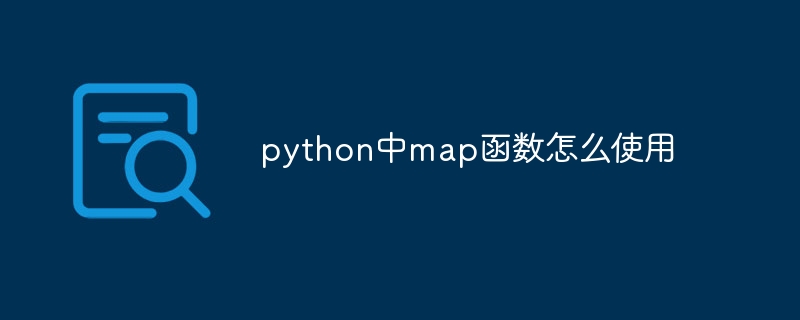map() 函数用于对可迭代对象的每个元素应用一个函数,返回一个包含转换后元素的新可迭代对象。用法包括:导入 map() 函数。定义要应用的函数。调用 map() 函数,传递函数和可迭代对象作为参数。获取转换后的结果,通过将 map 对象转换为列表、元组或生成器。

Python 中 map() 函数的使用
什么是 map() 函数?
map() 函数是一个内置函数,用于对可迭代对象(例如列表、元组或生成器)中的每个元素应用一个指定的函数。它返回一个包含转换后元素的新可迭代对象。
语法:
立即学习“Python免费学习笔记(深入)”;
<code class="python">map(function, iterable)</code>
其中:
function:要应用于每个元素的函数。iterable:要转换的可迭代对象。用法:
示例:
假设我们有一个数字列表 numbers:
<code class="python">numbers = [1, 2, 3, 4, 5]</code>
我们可以使用 lambda 表达式将数字平方:
<code class="python">squared_numbers = map(lambda x: x ** 2, numbers)</code>
squared_numbers 是一个 map 对象,我们可以将其转换为列表:
<code class="python">squared_numbers_list = list(squared_numbers)</code>
输出:
<code>[1, 4, 9, 16, 25]</code>
注意:
list comprehension 或 for 循环。以上就是python中map函数怎么使用的详细内容,更多请关注php中文网其它相关文章!

python怎么学习?python怎么入门?python在哪学?python怎么学才快?不用担心,这里为大家提供了python速学教程(入门到精通),有需要的小伙伴保存下载就能学习啦!

Copyright 2014-2025 https://www.php.cn/ All Rights Reserved | php.cn | 湘ICP备2023035733号